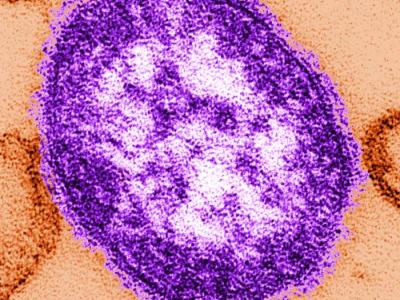Feb 3, 2009 (CIDRAP News) A case of the often deadly Marburg hemorrhagic fever was retrospectively identified in an American who fell ill after a trip to Uganda in January 2008 and eventually recovered, the Centers for Disease Control and Prevention (CDC) reported recently.
The case appears to be the first Marburg infection reported in the United States.
"The patient developed illness four days after returning to the US, was hospitalized, discharged, and fully recovered," the CDC Special Pathogens Branch said in an online notice. No details about the patient or the illness were released. A CDC official told CIDRAP News the agency expects to be able to provide more information soon.
Samples collected from the patient during the illness initially showed no evidence of a Marburg virus infection, the agency said. But a sample taken during the patient's convalescence yielded evidence of a possible infection, and more detailed testing of both samples at the CDC confirmed that the patient had the virus.
The patient had visited the bat-infested "python cave" in western Uganda, the CDC said. Fruit bats can harbor the Marburg virus, which is a cousin of the deadly Ebola virus.
A Dutch woman who visited the same cave in July 2008 contracted Marburg fever and died after returning to the Netherlands. "Both patients likely acquired their infections as a result of contact with cave-dwelling fruit bats," the CDC said.
The Ugandan Ministry of Health officially closed the cave to visitors in August, after the Dutch case, the statement said.
The appropriate state and local health departments were working with the CDC to further investigate the American patient's case, the CDC reported. The investigation includes assessing anyone who might have been exposed to the patient during the illness and checking on travelers who visited the same cave or other caves in Africa. Officials said there was no evidence that the disease spread to anyone else.
The Marburg virus, like the Ebola virus, can cause a severe febrile disease for which there is no vaccine or specific treatment. Case-fatality rates in recorded outbreaks have ranged from 21% to 90%, according to CDC data. A major outbreak occurred in Angola in 2004 and 2005, involving 252 confirmed cases with 227 deaths, as listed by the CDC. The virus is believed to spread through contact with bodily fluids.
See also:
CDC outbreak postings with report on Marburg case
http://www.cdc.gov/ncidod/dvrd/spb/outbreaks/index.htm
CDC advice to travelers related to Marburg case
http://wwwn.cdc.gov/travel/contentMarburgUganda.aspx
CDC questions and answers about Marburg
http://www.cdc.gov/ncidod/dvrd/spb/mnpages/dispages/marburg/qa.htm
CDC table of Marburg outbreaks
http://www.cdc.gov/ncidod/dvrd/spb/mnpages/dispages/marburg/marburgtable.htm
Jul 10, 2008, CIDRAP News story on case in the Netherlands
http://www.cidrap.umn.edu/cidrap/content/bt/vhf/news/jul1008marburg.html















